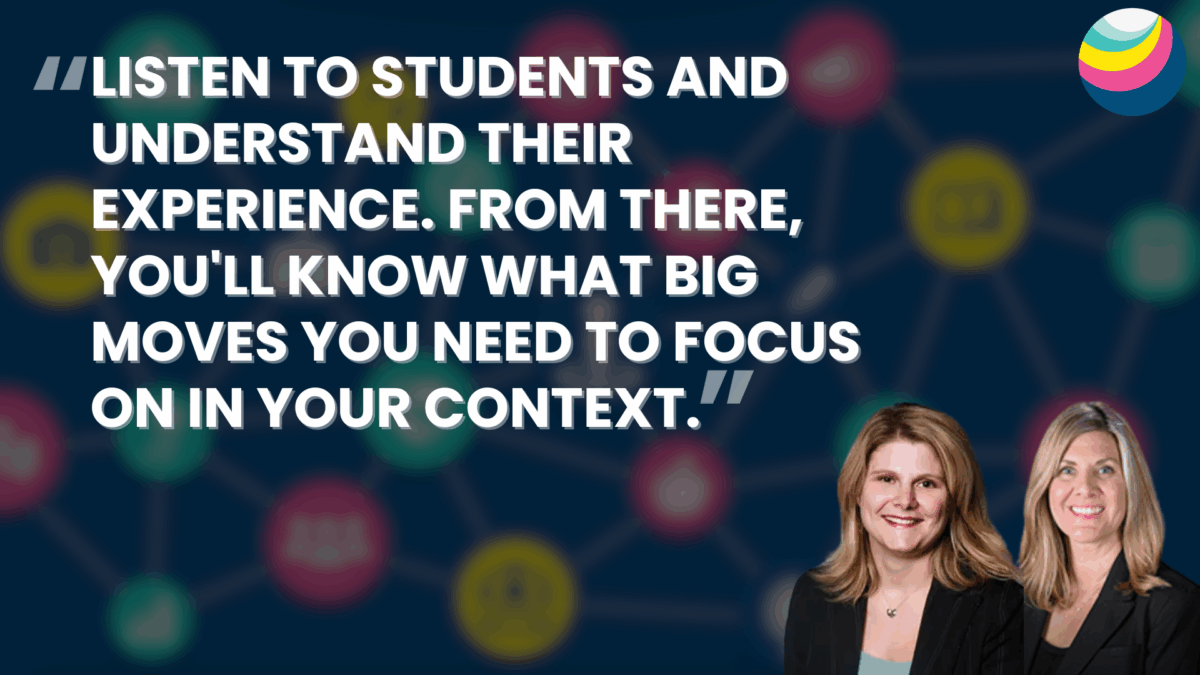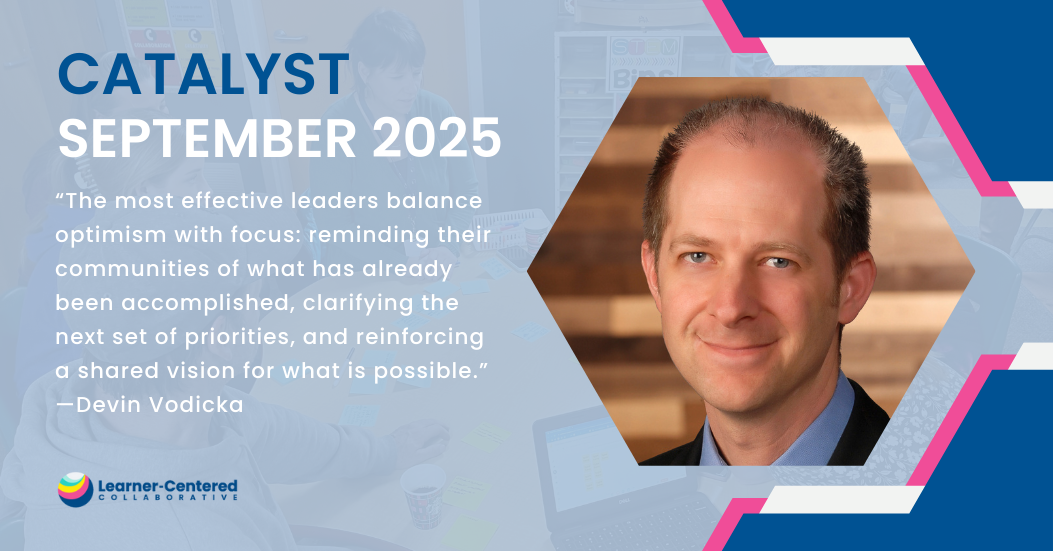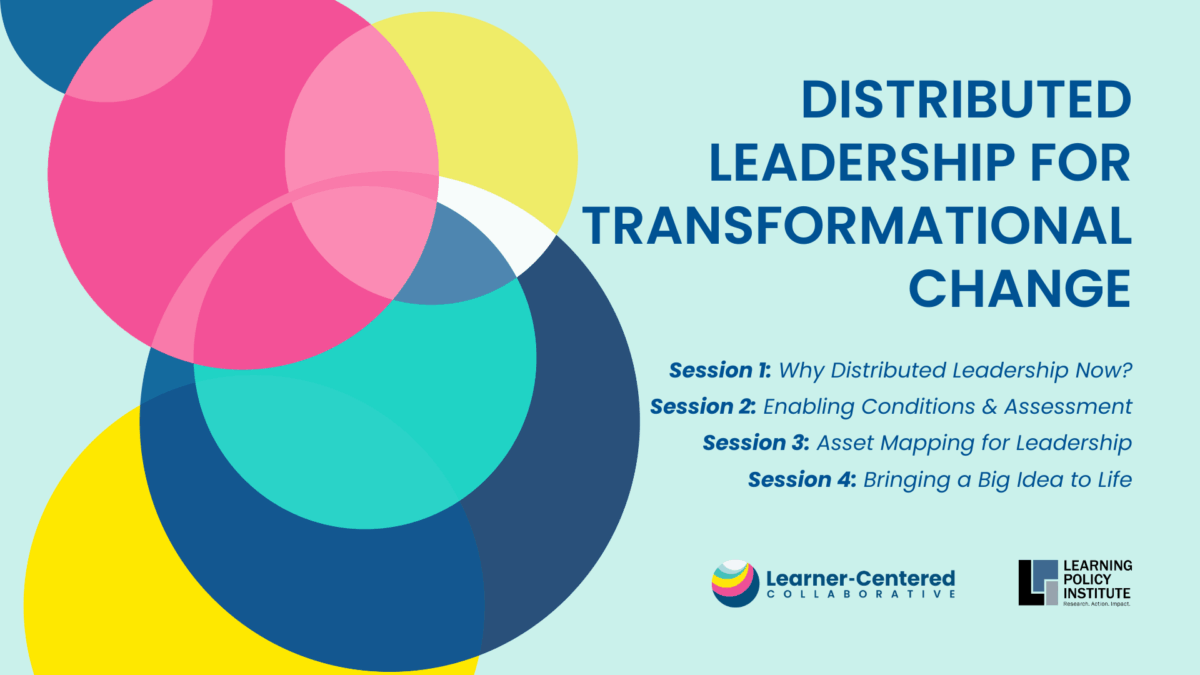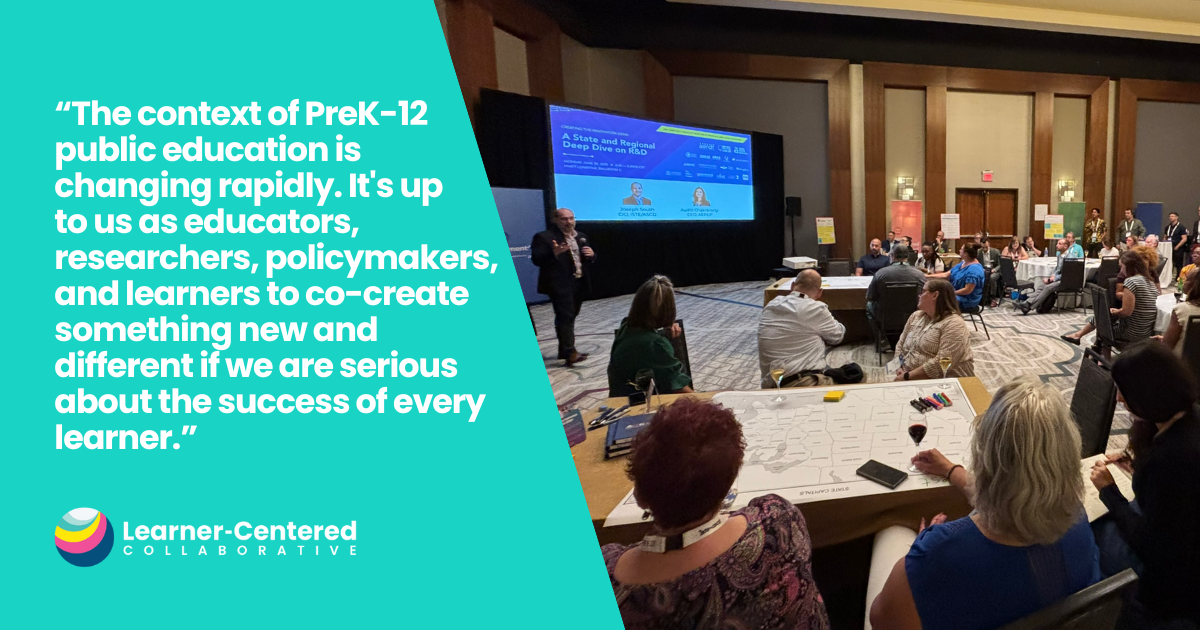Going Beyond Assumptions: The Journey to Policies that Enable Learner-Centered Transformation
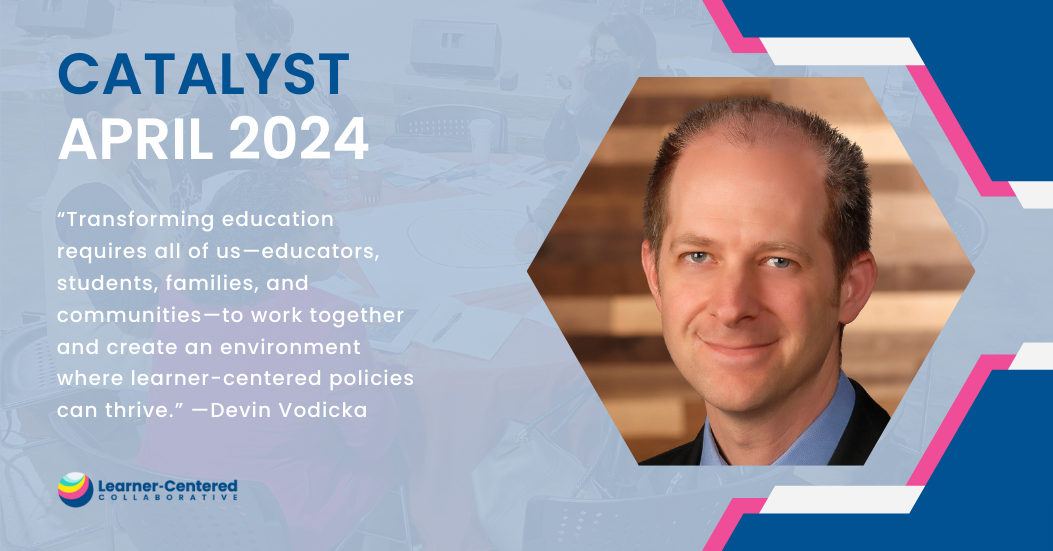
Reflecting on my journey as Superintendent of Vista Unified School District, I learned the power of auditing and engaging in a collaborative process to update district policies. As critical as it is to establish a learner-centered Framework for the Future—vision, mission, values, goals, learning model, and accountability structure—all of it sits on shaky ground if the enabling policies are not there to support it.
Online Course: Learner-Centered Leadership Book Study
Many systemic behaviors I saw in Vista, and now see in districts across the country, are perpetuated by an assumption that some policy somewhere says “this” is what we must do. These assumptions can keep us right where we are no matter how grand our visions for the future may be.
I encourage every educator to test those assumptions. For each behavior, you’ll discover one of three things:
- There is a very specific policy that spells out to the letter what you must do.
- There is a general policy that current behavior has formed within, but there is nothing specifically saying you have to do it that way.
- There is no policy at all.
Understanding your district’s and state’s policy environment will open the door to many practical and transformational possibilities. My experience has shown that many times the perceived constraints educators believe to be true are not articulated in any policy; they are simply self-imposed legacies of our prior experiences. In addition, when existing policies are limiting what we can do, we have the opportunity to influence changes to the existing policies in our environment.
Conducting a Policy Audit
Once I realized I needed to get intimately familiar with Vista’s policy environment, I asked the district’s legal counsel to identify all the areas our leadership team needed to dig into, so we could align the district’s policies to our Framework for the Future.
With our much shorter list in tow, we identified the top ten policies that, if changed, would have the biggest impact on learning and learners throughout the district. Then, we kicked off a co-creative process that included voices at every level of the system, including students and families. Not only is it theoretically bad practice to create policies behind closed doors, we had evidence in Vista that if you want to change policy, you better have all stakeholders in the conversation.
Complementary Tool: Identify Your Learner-Centered Priorities
Before my arrival, there was an effort to change graduation requirements that were rigid and unconducive to an engaging learning environment. The decision to change this policy was the right one. The process for changing it fell short. By not taking a high-empathy approach and co-designing a new policy with teachers, students, and families, when the policy was brought to the board, it incurred significant resistance from the community and failed to pass.
When we decided to address the same graduation policy and engaged all stakeholders, we were able to successfully get a new, more learner-centered policy in place. We did similar work around homework, concurrent enrollment, and credits for online courses. These changes were inspired not only by our internal policy review but they were also driven by input from students who shared how the policies were adversely affecting their learning experiences.
Bringing New Policies (and Possibilities) to Life
The process was rinse and repeat—identify a high-impact policy opportunity, listen and engage with all stakeholders who were impacted by this policy, co-create a new policy with these stakeholders, and put one more layer of foundation below the learner-centered vision we were pursuing.
One of my favorite quotes that I never tire of citing is from Myron Rogers: “The process you use determines the future you get.” When it comes to creating enabling policies that align with your learner-centered vision, the process you use to create those policies will determine the learner-centered future you do or don’t get.
Transforming education requires all of us—educators, students, families, and communities—to work together and create an environment where learner-centered policies can thrive. By fostering open dialogue, building trust, and co-creating policies that support our shared vision, we can create a future where every learner will know who they are, thrive in community, and actively engage in the world as their best self.
